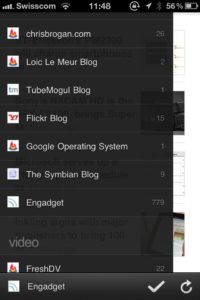The Case for Using Albums in iPhoto, or WebDav
When you take photos on an iphone or other such device it’s easy to take photos and never organise them, unless you share specific photos with specific people. Images are automatically organised by time, date, month, location and people by photo apps but this is just an illusion of organisation.
By playing with Photoprism, Nextcloud, OneCloud, MyCloud (the Swisscom one), Immich and others I have often come across the same problem. When you’re synching thousands of images at a time devices time out after a few minutes, and you need to start from scratch over, and over, and over again. I’ve encountered this issue with almost all backup solutions.
If I had created an album for each month, week, or even event I would now save a lot of time. It’s not that it makes synching painless, but rather that it makes it easier to backup individual albums rather than 19,000 images at a time. With an album you select it and 300 images are uploaded from one album, and 12 from another, and 230 from yet another.
To use an analogy, imagine that a photo album is a head of hair, at the barber’s. You could cut an individual’s hair in five to ten minutes, and move on to the next and get through 72 hair cuts, or you could cut 72 people’s hair simultaneously but everyone would need to remain in place for eight hours. This is the nightmare I’m putting iphone photo backup apps through with my experimentation.
PhotoPrismUpload
This morning I was experimenting with PhotoPrismUpload. I wanted to experiment with this app because it’s directly paired with PhotoPrism and PhotoPrism looks like a good iCloud and Google Photos alternative. The first flaw that I spotted is that it doesn’t detect that all of the photographs are already backed up to PhotoPrism so I need to spend hours getting it to say “This file is uploaded, this file is also uploaded, and that file is now uploaded.”
This, in and of itself is quite time consuming but to add to the experience it downloads the offline images from iCloud to the phone, uploads them, and then leaves them there. The consequence is that my backup phone with a large hard drive is now low on memory and the sync is blocked.
To the question “Does this matter?” the answer is “nope”. Not for me, because my images are backed up. It’s a question of convenience. If I was to suggest a feature, which I should, later, it would be an option to “Show only un-uploaded images” like we have with e-mail clients for unread messages.
If I had this option then I would upload x number of pictures until the app timed out, select the latest un-uploaded images, upload them, and repeat this until everything is synched. Now that the phone is low on memory I will abort the experiment, but I won’t stop using the app because it is simple and convenient to use.
It clearly shows which images are uploaded, and which still need to be uploaded. When you sync images it’s quick and intuitive. You have two or three ads displayed but they’re not annoying like the awful adverts you get with mobile games. I got ads for Google Ads and for Mediamarkt. For 3 CHF you can do away with ads.
Photosync and WebDav
Photosync is the recommended app, by the developers of Photoprism but I don’t like that it encourages you to pay once for functionality that should be by default and a second time for added features. Despite this I do really like how Webdav works. I setup two webdav accounts. One that is for when I’m on home wifi and the second for when I’m connecting through the VPN when I’m out.
WebDav is an excellent tool because it knows which photos have been uploaded. With the Photosync app photos that are not uploaded yet are highlighted with a red border. You click the red sync button and you can upload “new”, “selected” or “all”. It then gives you the choice between “computer”, “phone/tablet”, “webdav”, “ftp”, “smb”, “files/usb/icloud”, dropbox, onedrive and google drive. I use webdav 2 and within seconds the files are uploaded. If I was out I would use Webdav 3.
The real advantage of the Photosync app is that you can see “new”, “selected” or “all”. If an upload is interrupted for any reason you don’t need to “select all” and upload. You can select just the “new” images, and within seconds you’re synching again.
Photosync information is not automatically synched between two phones so I don’t know how well Webdav works, via this app, when synching the same library from two phones.
And Finally
By organising photos into albums by hand you make online synchronisation more granular. Instead of uploading 19,000 files at once you upload one album, and then another, until everything is uploaded. It’s easier for backup solutions to keep track of their progress, and you don’t need to keep scrolling up and down to keep the screen awake and uploading.
PhotoPrismUpload and Photosync are both interesting solutions for synching to PhotoPrism but PhotoPrismUpload has the advantage of costing 3 CHF not to see ads, whereas Photosync costs 25 CHF for premium features, as well as 6 CHF for other features. If I had seen PhotoPrismUpload before Photosync I would have been happy. PhotoPrismUpload is a dedicated tool that works well within its niche.



